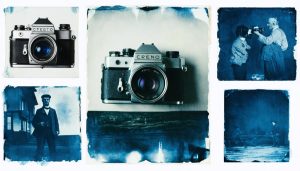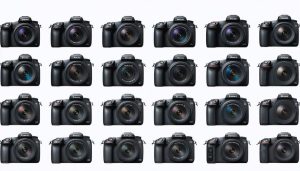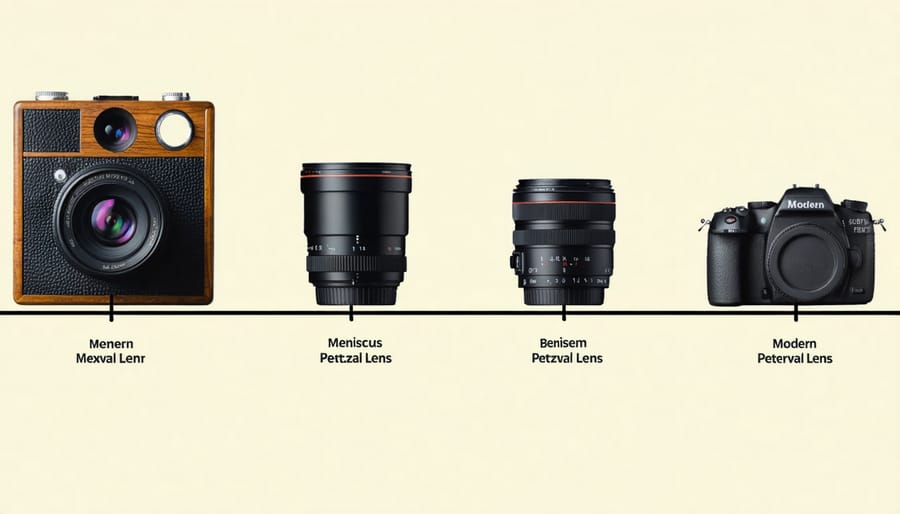
From wooden boxes with tiny pinholes to sophisticated electronic marvels, the evolution of camera lenses represents one of humanity’s most fascinating journeys in optical innovation. In 1839, when Louis Daguerre introduced the first practical photography process, his simple meniscus lens could only capture basic images. Yet this humble beginning sparked a revolution that would transform how we see and document our world.
The story of camera lenses intertwines with human ingenuity, scientific discovery, and artistic vision. Through the pioneering work of optical scientists like Carl Zeiss and Ernst Abbe in the 1880s, photographers gained access to precisely calculated lens designs that dramatically improved image quality. Their mathematical approach to lens construction laid the foundation for modern photography, enabling everything from street photography to space exploration.
Today’s photographers inherit nearly two centuries of optical evolution, where each breakthrough – from the Cooke Triplet of 1893 to modern aspherical elements and nano-coating technology – represents a step toward optical perfection. This legacy continues to shape how we capture moments, tell stories, and push the boundaries of visual expression in an increasingly image-driven world.
The Birth of Photography’s Eye: Early Lens Development
The Camera Obscura Legacy
The fascinating journey of camera lens development begins with the camera obscura, a phenomenon first documented by ancient philosophers like Aristotle and Mo Di. This simple yet ingenious concept – where light passing through a small hole projects an inverted image onto a surface – laid the groundwork for all modern photography.
During the Middle Ages, scholars and artists refined their understanding of this optical principle. They discovered that adding a glass element to the pinhole could produce brighter, sharper images. This breakthrough marked humanity’s first steps toward deliberately manipulating light for imaging purposes.
By the Renaissance period, artists like Leonardo da Vinci were extensively documenting the camera obscura’s properties and exploring ways to enhance image quality through different aperture sizes and basic lens configurations. These experiments proved crucial for understanding fundamental optical concepts like focal length and image formation.
The real turning point came in the 16th century when Giovanni Battista della Porta published detailed descriptions of using convex lenses with the camera obscura. This innovation dramatically improved image brightness and clarity, setting the stage for the development of more sophisticated optical systems.
These early discoveries established core principles that still influence modern lens design. Concepts like focal length, aperture, and image projection – first observed through the camera obscura – remain essential to understanding how today’s complex photographic lenses function.
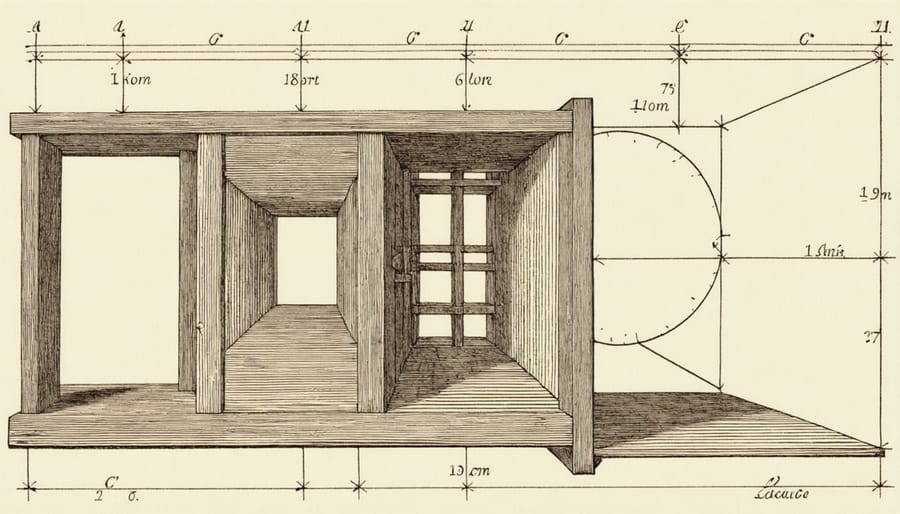
Daguerre and Petzval’s Revolution
In 1839, Louis Daguerre revolutionized photography with his daguerreotype process, which demanded a completely new approach to lens design. Working with optician Charles Chevalier, Daguerre developed the first lens specifically created for photography – a significant milestone in the evolution of historic photo processes.
The real breakthrough came when mathematician Joseph Petzval designed his portrait lens in 1840. This ingenious creation was a game-changer, featuring an unprecedented f/3.6 aperture that was roughly 20 times faster than the Chevalier lens. For the first time, portrait photographers could capture images with exposure times of just 15-30 seconds, rather than the previous 10-15 minutes.
Petzval’s design introduced several revolutionary concepts that we still use today. His double achromat construction minimized chromatic aberration, while the separate front and rear element groups created that distinctive shallow depth of field that portrait photographers love. The lens produced images with sharp center focus and beautifully smooth, swirling bokeh in the background – a look that many modern lens makers still try to replicate.
This period marked the beginning of purpose-built photographic lenses, setting the foundation for all future developments in camera optics. The success of these early designs proved that specialized photographic lenses were not just possible, but essential for advancing the art form.
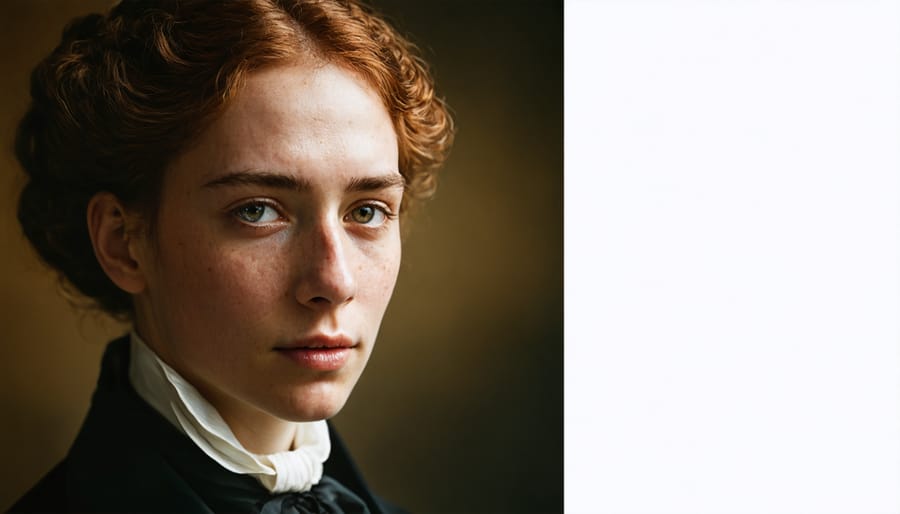
The Glass Revolution: 1850-1900
Optical Glass Breakthroughs
The evolution of optical glass manufacturing marks one of the most significant turning points in photography’s history. In the early days, lens makers struggled with inconsistent glass quality, which often resulted in chromatic aberration and distortion – common problems that plagued many old photography techniques.
The breakthrough came in the 1880s when Otto Schott, working with Ernst Abbe and Carl Zeiss, developed new glass formulations that revolutionized lens making. Their creation of barium crown glass allowed for better control of optical properties, particularly in reducing chromatic aberration. This innovation led to the development of the first anastigmat lenses, which could produce sharper images across the entire frame.
By the early 1900s, glass manufacturers had mastered the art of creating optical glass with precise refractive indices and dispersion characteristics. This advancement enabled lens designers to create more complex designs with multiple elements, each serving a specific purpose in controlling light transmission and image quality.
The introduction of rare-earth glasses in the mid-20th century further expanded possibilities. These specialized materials, containing elements like lanthanum, allowed for even better control of dispersion and enabled the creation of faster lenses with wider maximum apertures while maintaining excellent image quality.
Modern optical glass manufacturing continues to push boundaries with materials like fluorite crystal elements and aspherical lens elements. These innovations have made it possible to create smaller, lighter lenses that deliver exceptional sharpness and minimal distortion – qualities that early photographers could only dream of achieving.
The Rise of Multi-Element Designs
The evolution from simple single-element lenses to complex multi-element designs marked a revolutionary advancement in photography. By the mid-1800s, photographers and optical engineers realized that combining multiple lens elements could effectively address common image quality issues that plagued early cameras.
Joseph Petzval made one of the first significant breakthroughs in 1840 with his portrait lens design, which used four elements arranged in two groups. This arrangement dramatically improved image sharpness and reduced the dreaded spherical aberration that caused blurry photos. The Petzval design achieved an impressive f/3.6 aperture, allowing for much faster exposure times than previous lenses.
The late 1800s saw the emergence of even more sophisticated designs. Paul Rudolph’s groundbreaking Tessar lens design in 1902 became a template for modern lenses, featuring four elements in three groups. This configuration delivered exceptional sharpness while minimizing chromatic aberration and distortion, making it particularly suitable for both portraiture and landscape photography.
Multi-element designs brought several crucial advantages: better light transmission, reduced optical aberrations, and improved corner-to-corner sharpness. Each element in the system played a specific role in controlling how light traveled through the lens, with some elements correcting the distortions introduced by others.
These advancements laid the foundation for modern lens design, where it’s common to find zoom lenses with 15 or more elements arranged in complex groups. Today’s sophisticated computer-aided design and manufacturing processes allow for incredibly precise multi-element configurations that early pioneers could only dream of, delivering unprecedented image quality across all photography genres.
20th Century Innovations
Coatings and Contrast
One of the most significant breakthroughs in lens technology came with the development of lens coatings in the late 1930s. Before this innovation, photographers struggled with lens flare and reduced contrast, particularly when shooting in challenging lighting conditions. The introduction of anti-reflective coatings revolutionized color reproduction in photography and dramatically improved image quality.
The first practical lens coating was developed by Alexander Smakula at Carl Zeiss in 1935. This single-layer magnesium fluoride coating reduced surface reflections from about 5% to 1%, resulting in sharper images with better contrast. The technology was initially kept secret and used for military optics during World War II before becoming widely available for commercial photography.
By the 1950s, multi-layer coatings emerged, further reducing lens flare and improving light transmission. These sophisticated coatings, often appearing as subtle purple or green tints on the lens surface, allowed manufacturers to design increasingly complex lens formulas with more elements without sacrificing image quality.
Modern lens coatings are engineering marvels, combining multiple layers of different materials, each just nanometers thick. They not only improve contrast and reduce flare but also protect the glass elements from scratches and environmental damage. Today’s premium lenses often feature specialized nano-coatings that repel dust and moisture while maintaining exceptional optical performance in challenging conditions.
The evolution of coating technology has been instrumental in achieving the remarkable image quality we take for granted in modern photography, enabling everything from smartphone cameras to professional telephotos to deliver crisp, clear images.
Zoom Lens Revolution
The development of zoom lenses in the mid-20th century marked a revolutionary turning point in photography, offering photographers unprecedented versatility in a single piece of glass. While the concept of variable focal length had been explored as early as 1902 by Clile C. Allen, it wasn’t until 1959 that the first practically useful zoom lens for still photography emerged – the Zoomar 36-82mm f/2.8.
The true breakthrough came when Japanese manufacturers began refining zoom lens technology in the 1960s. Nikon’s introduction of the 43-86mm f/3.5 zoom in 1963 demonstrated that quality zoom lenses could be both affordable and reliable. This development sparked a revolution in both professional and amateur photography, leading to the art of mastering zoom lenses becoming an essential skill for photographers.
Through the 1970s and 1980s, advances in optical design and manufacturing processes led to significant improvements in zoom lens quality. The introduction of computer-aided design helped engineers create more complex optical formulas, reducing common zoom lens problems like chromatic aberration and barrel distortion. This period saw the emergence of now-standard zoom ranges like the 70-200mm and 24-70mm, which remain workhorses in many photographers’ bags today.
The digital era brought another leap forward in zoom lens technology. Enhanced optical stabilization systems, improved autofocus motors, and specialized lens coatings made zoom lenses increasingly capable in challenging situations. Modern zoom lenses often match or even exceed the optical quality of their prime lens counterparts, while offering the flexibility that contemporary photographers demand.
This evolution transformed how photographers approach their craft, allowing for quick composition changes without changing lenses and enabling new creative possibilities that were previously impossible with fixed focal length lenses. Today’s professional-grade zoom lenses represent the culmination of decades of optical innovation, offering exceptional image quality alongside unmatched versatility.
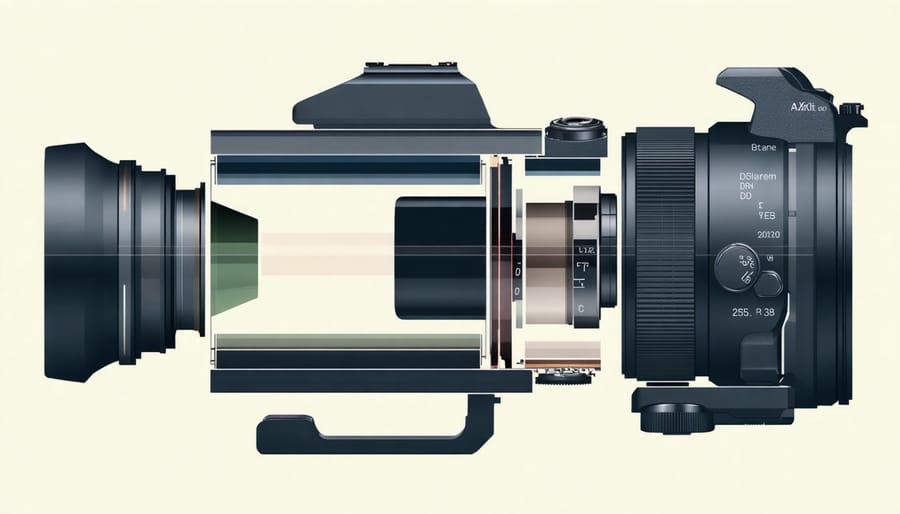
Autofocus Innovation
The journey to autofocus technology represents one of the most significant leaps in camera lens innovation. In the 1960s, photographers dreamed of a system that could automatically achieve sharp focus, but the technology remained elusive. The breakthrough came in 1977 when Leica introduced the first passive autofocus system in their Correfot prototype, though it never reached commercial production.
Honeywell and Polaroid had been experimenting with active autofocus systems using sonar technology, but it wasn’t until 1985 that Minolta revolutionized the industry with the Maxxum 7000. This camera introduced the world’s first integrated autofocus system in a consumer SLR, featuring motors built into the camera body that mechanically coupled with the lens.
The 1990s saw rapid advancement in autofocus technology. Canon’s introduction of the ultrasonic motor (USM) in 1987 marked a significant milestone, offering nearly silent operation and incredibly fast focusing speeds. Nikon followed with their Silent Wave Motor (SWM) technology, while other manufacturers developed their own variants.
Modern autofocus systems have evolved to include sophisticated phase-detection and contrast-detection methods, often working in tandem. The introduction of mirrorless cameras has pushed this technology even further, with innovations like eye-tracking autofocus and subject recognition powered by artificial intelligence.
Today’s photographers can choose from a variety of autofocus technologies, from basic contrast-detection systems in entry-level cameras to advanced hybrid systems capable of tracking fast-moving subjects with remarkable accuracy. This evolution has not only made photography more accessible but has also enabled new creative possibilities that were once impossible with manual focus alone.
Digital Age Adaptation
Digital-Specific Designs
The transition to digital photography brought unique challenges and opportunities for lens design. Unlike film, digital sensors react differently to light, particularly when it comes to how rays strike the surface at various angles. This led manufacturers to develop specialized lenses optimized specifically for digital cameras.
One of the most significant innovations was the introduction of lens coatings that reduce internal reflections, which can cause more noticeable flare and ghosting with digital sensors than with film. These modern coatings also help manage the way light hits the sensor’s micro-lenses, ensuring more consistent illumination across the entire frame.
Digital-specific designs also address the issue of chromatic aberration, which becomes more apparent on high-resolution sensors. Manufacturers introduced new lens elements and glass types specifically engineered to minimize color fringing and maximize sharpness for pixel-dense sensors.
The rise of mirrorless cameras sparked another revolution in lens design. With shorter flange distances, optical engineers could create new lens formulas that were previously impossible with DSLRs. This led to more compact designs without compromising image quality, and in many cases, achieving even better performance than their DSLR counterparts.
These digital-era innovations continue to evolve, with manufacturers now developing lenses that complement features like in-body image stabilization and advanced autofocus systems, ensuring optimal performance for modern digital photography.
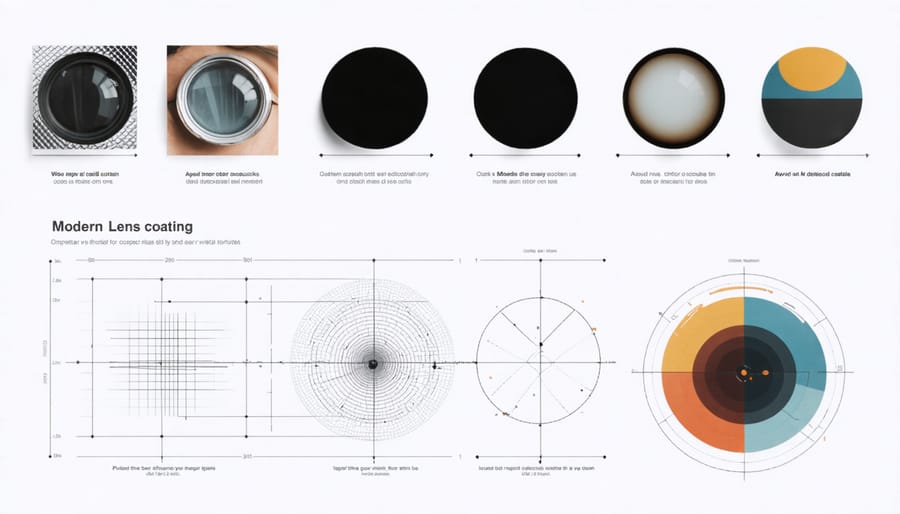
Modern Optical Technologies
Modern lens technology has transformed dramatically, driven by computer-aided design and advanced manufacturing processes. Today’s lenses incorporate sophisticated elements like aspherical glass, nano-coating technology, and image stabilization systems that early photographers could only dream of.
One of the most significant innovations is the development of diffractive optics, which allows for smaller, lighter lenses without compromising image quality. These elements work alongside traditional glass elements to control chromatic aberration and deliver sharper images, enabling photographers to explore new creative photography techniques previously limited by equipment constraints.
Manufacturers now use advanced materials like fluorite crystal and specialized low-dispersion glass to minimize color fringing and enhance clarity. Multi-layer coating technologies have evolved to reduce lens flare and ghosting while improving light transmission, resulting in better contrast and color reproduction.
The integration of electronics has also revolutionized lens design. Modern lenses feature built-in processors that communicate with camera bodies, enabling precise autofocus and real-time optical corrections. Silent focusing motors and electromagnetic aperture systems have made lenses more responsive and reliable than ever before.
3D printing and precision manufacturing techniques have opened new possibilities in lens design, allowing for more complex optical formulas and tighter tolerances. These advances continue to push the boundaries of what’s possible in photography, making high-quality optics more accessible to photographers at all levels.
From the humble beginnings of simple glass elements to today’s sophisticated optical systems, the evolution of camera lenses represents one of photography’s most fascinating journeys. This remarkable progression has transformed not just how we capture images, but how we see and interpret the world around us.
The path from early daguerreotype lenses to modern mirrorless systems showcases humanity’s relentless pursuit of optical excellence. Each breakthrough, whether it was the introduction of coating technologies, aspherical elements, or advanced autofocus systems, has pushed the boundaries of what’s possible in photography.
Today, we stand at an exciting crossroads. Computational photography and artificial intelligence are beginning to reshape our understanding of optical design. Modern lenses are becoming smaller, sharper, and more versatile than ever before, while maintaining incredible image quality that early pioneers could only dream of.
Looking ahead, the future of lens development seems boundless. We’re likely to see even more integration between optical and digital technologies, potentially leading to adaptive lenses that can change their characteristics on the fly. The rise of mixed reality and virtual photography may also drive new innovations in lens design we haven’t yet imagined.
What remains constant, however, is the fundamental role of lenses in helping photographers translate their creative vision into reality. As we continue to push technical boundaries, the art of photography will undoubtedly evolve, but the magic of capturing light through carefully crafted glass elements will always be at its heart.

